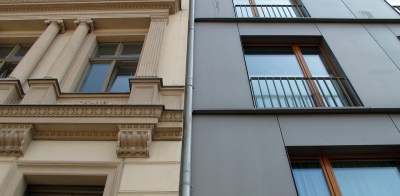If you’ve ever been to Washington, D.C., in the summer, you’re probably familiar with the intense heat and humidity that envelop it through most of July and August. As a D.C. resident, I have grown all too accustomed to the discomfort those months bring. Often, it takes a massive afternoon thunderstorm to clear out several days’ buildup in humidity, lower the temperature a couple degrees, and see blue in the sky once again. I believe we may be seeing a similar pattern today in the commercial real estate (CRE) market, in which a destructive “storm” clears the way for better conditions to take hold once again for lenders within the asset class.
The primary storm impacting the CRE market, of course, has been COVID-19, with all the disruption it has caused CRE investors this year. On top of that, a highly polarizing election process has also weighed on markets. With the election (mostly) behind us and the recent emergence of potentially significant developments in the race for a COVID vaccine, the clouds have started to clear for the CRE market and we expect to see more capital to begin coming off the sidelines. But before we look too far forward, we will take a look back and compare the state of the CRE market today to the market following the Global Financial Crisis (GFC). Spoiler alert: If history is any guide, post-crisis has been a good time to originate CRE loans.
A brief history of storm watching
Commercial real estate is inextricably connected to economic activity as property prices naturally tend to moderate or decline during economic downturns. With this in mind, we saw the CRE market face a significant downturn during the last major economic recession, the GFC of 2008–09. That downturn was much different from today’s—the GFC was brought on by excessive leverage, primarily in the residential real estate market—but the ensuing economic downturn also had a clear impact on commercial real estate. As an illiquid asset class, property prices generally take time to adjust during a downturn, but the public REIT market provides a “live” indicator of investor sentiment surrounding the CRE sector then and now.
In 2008, broad public REIT returns fell more than 37%, with all major property types recording steep declines.1 The roots of the current recession are very different from those of the GFC, but the steep downturn in economic activity has had similar effects on the publicly traded REIT market. On a year-to-date basis, public REIT returns remain negative across three of the four major property types, with retail facing the greatest stress.
Interestingly, however, private data is not sending the same message as the public markets. While private market prices decreased by 37% from peak to trough during the GFC, they only declined about 10% this year and have since started to rise again.2 During the GFC it took nearly two years before prices began to rise, but it has only taken eight months during the current downturn.
Green Street Commercial Property Price Index

Source: Green Street Advisors, as of October 2020. Highlighted areas represent the last two economic recessions.
In 2009, the clouds parted—and CRE lenders benefited
Despite the many differences at the roots of each downturn, we believe there are enough similarities to the GFC to help us understand what a potential recovery scenario might look like today. Like the humidity before a summer storm, total realized losses and loss rates on CRE debt were much higher on originations in the years leading up to the GFC. Importantly, though, like a storm clears out the humid summer air, CRE debt originated in the years during or just after the GFC showed sharply lower losses (by both realized losses and percentage loss rates) than CRE debt originated before the crisis.3 Against this backdrop, we believe investors might again expect strong performance from loans originated in today’s environment as the pandemic may already be taken into consideration as part of the underwriting process.
Private label CMBS loss by vintage

Source: Trepp, as of October 2020.
Another key support in today’s environment compared to the GFC is that we entered the current recession in a materially better position. Prior to this year, interest rates remained at very low levels and fell further as economic activity collapsed, capital was largely available, leverage was moderate across the CRE landscape, and price growth was leveling off to what we believe was a more sustainable rate. As a result, peak CMBS delinquency rates remained lower than in the prior cycle and have already begun to moderate as lenders have been able to grant temporary relief to certain properties and others continue to perform.3 Further, delinquencies have been much more focused on certain property types and regions rather than broad based. In October, both the delinquency and special servicing rates fell for CMBS loans, the first month when both metrics declined since the pandemic began.3
Dry powder tailwinds provide more room for sun
Despite the cloudy economic conditions, which have significantly reduced expectations for capital raising in 2020, private investors continue to have substantial capital available to put to work. North American-focused private equity investors have almost twice the amount of dry powder available compared to 2009. All told, private real estate funds globally hold a record $373 billion in dry powder that must be put to work, which we believe should be useful in helping build up liquidity and price discovery once again.4
North America-focused commercial real estate assets under management ($B)

Source: Preqin, as of November 2020.
In all, we believe significant opportunities continue to be on the horizon for CRE lenders despite the notable economic uncertainty. Broadly speaking, loans originated after the onset of a crisis tend to perform better over time, and lenders’ post-GFC discipline, which has remained in place through the current cycle, should provide an additional level of support. Further, the level of dry powder ready to be put to work within today’s ultra-low rate environment should support new transactions in the space. As we’ve seen in the past several years, however, we believe the major property types will continue to see varying weather patterns, with clear blue skies across the industrial landscape while retail and hospitality properties could generally remain mired in stormy weather.



